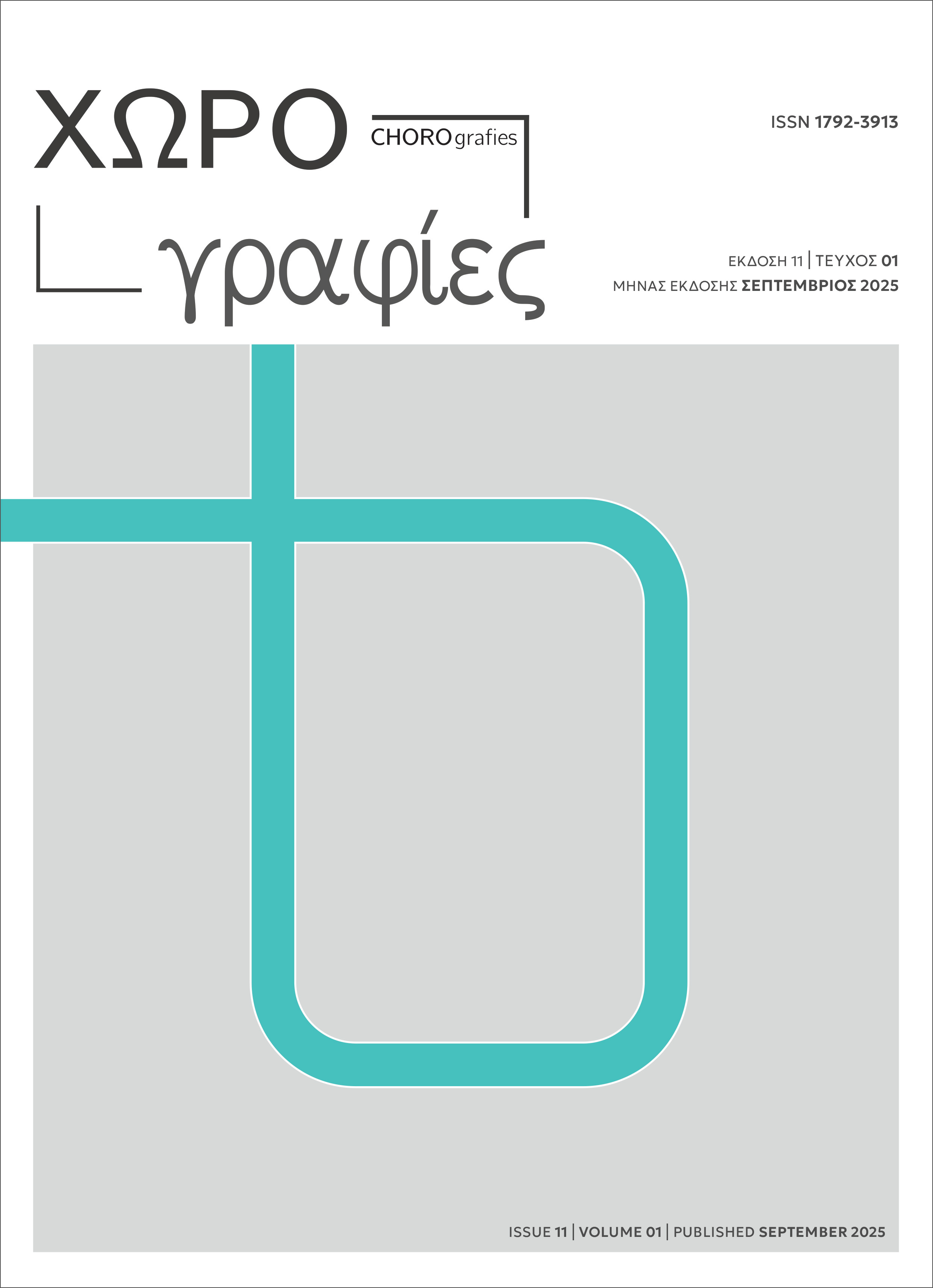Published 2025-09-22
Keywords
- cohousing,
- boundary,
- openness,
- collective space,
- public space
- housing,
- spatial ethos ...More
Copyright (c) 2025 Charikleia Pantelidou

This work is licensed under a Creative Commons Attribution-NoDerivatives 4.0 International License.
How to Cite
Abstract
There is increasing interest in architecture in cohousing as part of the search for solutions to sustainable habitation. In this context, cohousing introduces new forms of urban living to address contemporary challenges and needs. While the need for private homes remains unquestioned, the collective nature of cohousing presents a distinct condition in which the private aspect of housing blends with qualities of public space. This paper explores the collective aspect of shared space in cohousing and its potential to enhance public space, considering both formal and informal qualities. Cohousing has been criticized for providing spaces that encourage interaction solely among residents, fostering introverted complexes that weaken the public realm. After discussing the typologies of cohousing collective space, we draw on Sennett’s analysis of collaboration and Bakhtin’s concepts of polyphony and the carnivalesque to argue for conceiving collective space as an open field of communication between cohousing and public space.
Downloads
References
- Vestbro, Dick Urban. “From Collective Housing to Co-housing: A Summary of Research”. Journal of Architectural and Planning Research 17, no. 2 (2000): 164-78
- Krokfors, Karin. “Co-Housing in the Making”. Built Environment 38, no. 2 (2012): 308-14.
- Vestbro, D.U. and L Horelli “Design for gender equality: The history of cohousing ideas and realities”. Built Environment 38, no.3 (2012):315-35.
- Korpella, Salla. “Casa Malta: A Case Study of a Contemporary Co-Housing Project in Helsinki”. Built Environment 38, no. 3 (2012): 336-44.
- Medar, Katarina and Aleksandra Curcic. “Cohousing and coliving - comparative analysis of two alternative housing typologies by reviewing contemporary trends”. Facta Universitatis: Architecture and Civil Engineering 19, no. 1 (2021): 81-92.
- Glasze, Georg, Webster, Chris and Klaus Frantz. Private Cities: Global and Local Perspectives. Routledge, 2011.
- Sargisson, Lucy. “Second-Wave Cohousing: A Modern Utopia?” Utopian Studies 23, no.1 (2012):28-56.
- Williams, Jo. “Designing neighbourhoods for social interaction: The case of cohousing”. Journal of Urban design 10, no.2 (2005):195-227.
- Meltzer, Graham. “Cohousing: Verifying the importance of community in the application of environmentalism”. Journal of architectural and planning research 17, no.2 (2000):110-32.
- Vestbro, D.U. and L Horelli “Design for gender equality: The history of cohousing ideas and realities”. Built Environment 38, no.3 (2012):315-35.
- Palm Lindén, Karin. “The living environment, ecology and daily life: a study of two ecovillages”. In Changing Environmental Behaviour, edited by Lars Lundgren. Swedish Environment Protection Agency, 1999.
- Marcus, C.C. “Site Planning, Building Design and a Sense of Community: An Analysis of Six Cohousing Schemes in Denmark, Sweden and the Netherlands”. The Journal of architectural and planning research 17, no.2 (2000): 146-163.
- Bunker, Sarah., C. Coates, M. Field, and J. How (eds.). Cohousing in Britain: A Diggers & Dreamers Review. Diggers and Dreamers Publications, 2011.
- Ache, Peter and Micha Fedrowitz. “The development of co-housing initiatives in Germany”. Built Environment 38, no.3 (2012): 395-412
- Jarvis, Helen. “Saving Space, Sharing Time: Integrated Infrastructures of Daily Life in Cohousing”. Environment and Planning A: Economy and Space 43, no. 3 (2011): 560-77.
- Palm Lindén, Karin. “The living environment, ecology and daily life: a study of two ecovillages”. In Changing Environmental Behaviour, edited by Lars Lundgren. Swedish Environment Protection Agency, 1999.
- Fromm, Dorit and Els de Jong. Cluster Cohousing Revisited. Social + Design, 2021
- Blas, Sergio Martin, Dominguz, Guiomar Martin and Mariacristina D’Oria. “Shifting Domesticities: Recent social practices and Policies in Spain”, City, Territory and Architecture 11, no. 6 (2024)
- Grundstrom, Karin. “Shared Housing as Public Space; The Ambiguous Borders of Social Infrastructure”, Urban Planning 7, no.4 (2022): 499-509.
- Putt van der, Pierijn and Olv Klijn. DASH – Experimental Housing. NAI Publishers, 2020.
- De Jorge-Huertas, Virginia. “Baugruppen. Innovation through collaborative infrastructures”. Techne 17 (2019): 171-82.
- Jarvis, Helen. “Towards a deeper understanding of the social architecture of co-housing: evidence from the UK, USA and Australia”. Urban Research and Practice 8, no.1 (2015): 93-105
- Griffith, Emma Jo, Jepma, Mirte and Federico Savini. “Beyond collective property: a typology of collaborative housing in Europe”. International Journal of Housing Policy 24, no. 6 (2022): 1-21
- Sennett, Richard. Together: The Rituals, Pleasures and Politics of Co-operation. Yale University Press, 2013.
- Bakhtin, Mikhail. Problems of Literature and Aesthetics. Edition Translated in Greek by George Spanos. Plethron, 1980.
- Gutiérrez-Mozo, María-Elia. “Extending the Architecture of Cohousing: Towards Common Worlds of Care”. Buildings 11, no. 4 (2021): 166; https://doi.org/10.3390/buildings11040166.
- Grundstrom, Karin. “Shared Housing as Public Space; The Ambiguous Borders of Social Infrastructure”, Urban Planning 7, no.4 (2022): 499-509.
- Pantelidou, Charileia. “Reworking Boundaries: From Gates to Architecture of Openness”. In Semiotic Approaches to Urban Space: Signs and Cities, edited by F. Bellentani, M. Panico and Lia Yoka. Cheltenham Glos, UK and Northampton MA, USA: Elgar, 2024
- Papaioannou, Tasis. Thoughts on Architectural Synthesis. Indiktos, 2015 (in Greek).
- Pantelidou, Charikleia. Gated Communities and Spatial-social Exclusion: Transform;ations of Form and Meaning in Contemporary Urban Space. Nissos, 2019 (in Greek).

